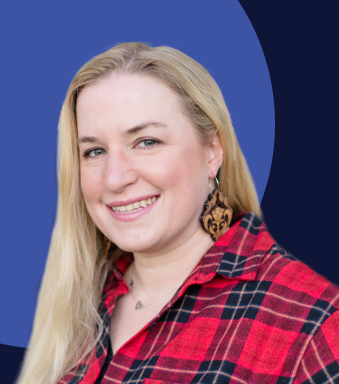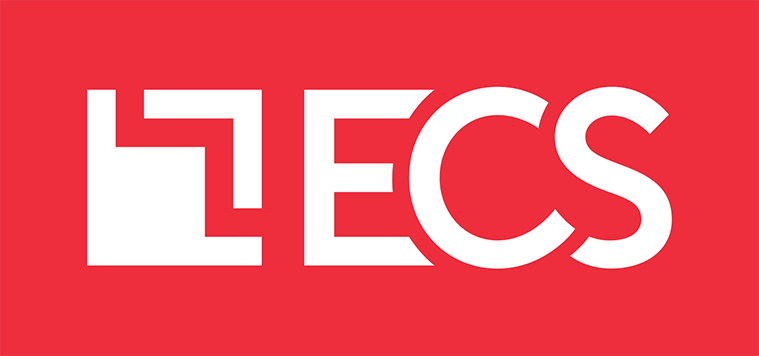Listen to article:
Wendy Litteral, UI/UX designer at ECS, thrives on creating intuitive user experiences that make a real-world impact. She works on critical projects for a leading law enforcement agency in a role that goes beyond software design, serving as a crucial link between users and developers. Wendy helps ensure that the tools ECS builds and delivers not only meet but anticipate the needs of those on the front lines of public safety.
We sat down with Wendy to discuss her work, its impact, and how ECS stands apart as a provider of key services, solutions, and capabilities to the agencies that protect the American people.
Wendy Litteral
UI/ UX Designer

Q. Tell me a bit about your background and role at ECS.
A: I’ve been designing websites since 1998, starting back in high school. My career has taken me through various roles, from working for cable companies and newspapers to magazines, and eventually focusing solely on web design. Over the years, I’ve become increasingly passionate about the “people side” of design — understanding how people think, how they work, and how their workflows can be improved.
When I joined ECS, it was because the job offered the chance to make a meaningful impact. I design software that supports critical missions for one of our top law enforcement agencies, missions involving sensitive data and operations that really matter for public safety. I love the challenge of figuring out complex puzzles and making sure the software we create is not only functional but also intuitive and user-friendly.
Q. Can you talk about your work, its importance to federal law enforcement, and the greater impact felt by everyday folks?
A: In my role, I serve as a vital bridge between the users of our software and the developers who build it. One of the unique aspects of my job is my direct access to the people using the tools we create. Instead of relying solely on customer feedback, I get to see firsthand how users interact with the software, which allows me to understand their day-to-day workflows in detail.
This user-centered approach enables us to design interfaces that are not only efficient but almost invisible. They work so seamlessly that users don’t even notice them, which is exactly the goal. By improving these processes, we’re helping to streamline critical operations that ultimately serve public safety and justice. The work we do makes it easier for those on the front lines to do their jobs effectively.
“[Our] design interfaces … are not only efficient but almost invisible. They work so seamlessly that users don’t even notice them, which is exactly the goal.”
Q. What sets ECS apart as a provider of these services, solutions, and capabilities?
A: It may sound corny, but what really sets ECS apart is the people. We have a team that is deeply committed to the success of our projects, and that dedication goes beyond just doing a job. It’s about wanting to see a solution through to the end and making sure it succeeds. Everyone on our team is invested in the work, which creates a collaborative environment where we’re all pushing toward the same goal.
I’m also part of the Customer Experience and User Experience (CX/UX) chapter of ECS’ Management and Modernization Center of Excellence, which has been an incredible resource. Being connected to other designers within the company means I have a network of peers to turn to when I need a different perspective or a fresh set of eyes on a problem. This level of collaboration and support is something I haven’t experienced anywhere else. Designers tend to be hired in “ones,” meaning it’s unusual for someone in my role to have that kind of access to a community of like-minded professionals.

“Designers tend to be hired in “ones,” meaning it’s unusual for someone in my role to have that kind of access to a community of like-minded professionals.”
Q. If you had to name one special skill or strength that’s necessary to succeed in this role, what would it be?
A: Patience is probably the most important skill in my role. It’s essential when you’re trying to bridge the gap between “wants,” which are based on real problems or challenges but often aren’t fully defined, and “needs.” Remember that you’re there to serve the needs of the customer and the mission. Then, adapt to the asks while also providing an experienced voice regarding what may or may not work.
Having the right tools is also crucial. I rely heavily on tools like whiteboarding software and Adobe Creative Suite to document and categorize findings, which helps in managing the extensive data we collect over time. These tools are indispensable when creating effective user interfaces. They help ensure that the insights we gather are organized and accessible, so we can continually refine our work based on both current and past data. Having access to the right resources and being able to patiently work through complex problems are key skills to succeeding in this role.







